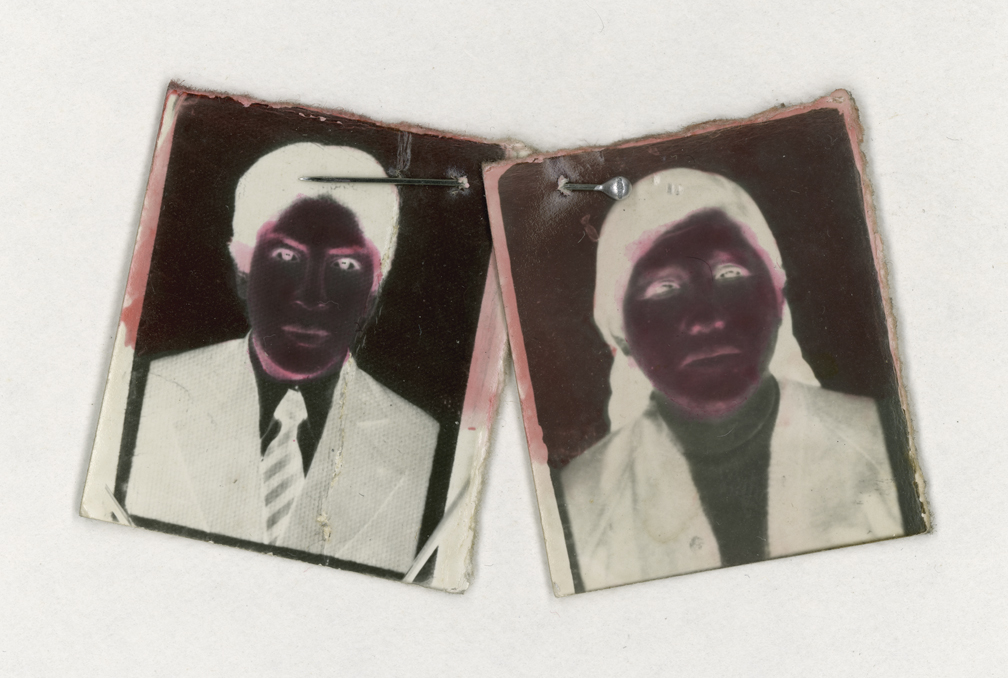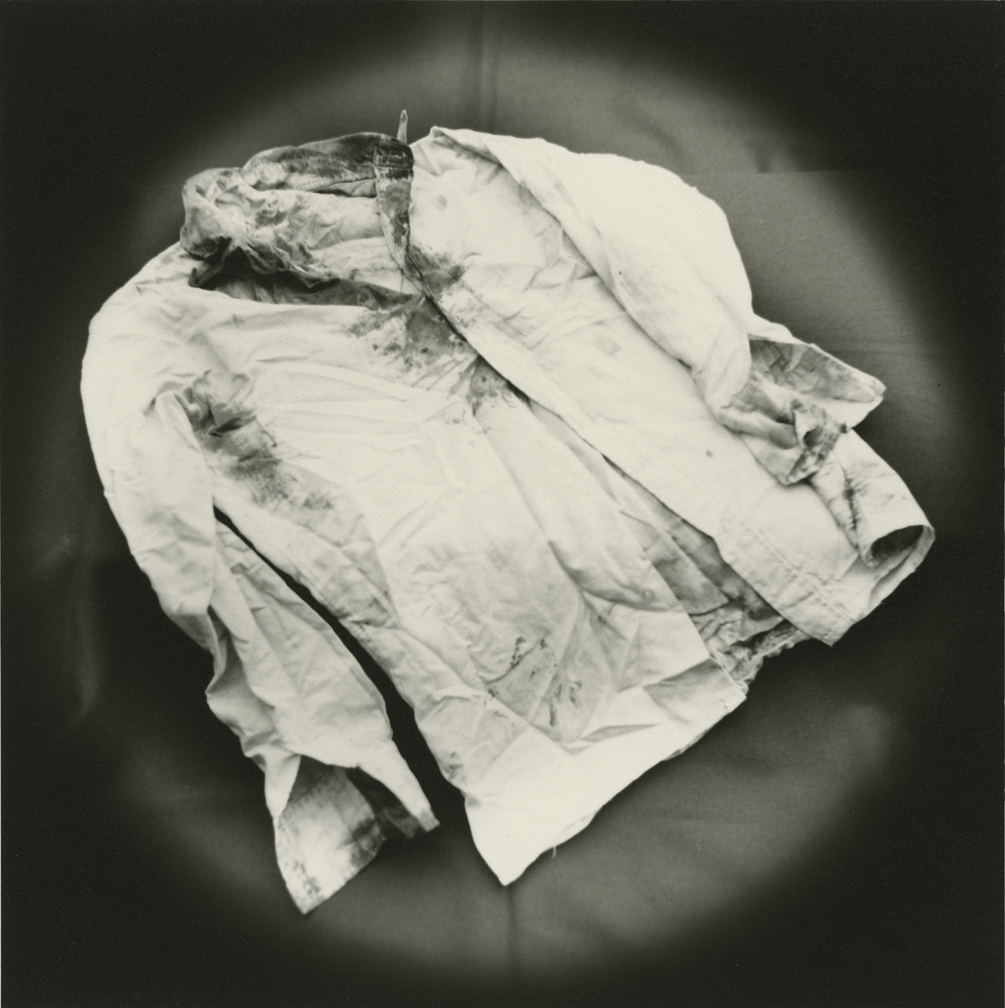
Milagros de la Torre "Under the Black Sun" 1991-1993 Hand-dyed toned gelatin silver print, Mercurochrome, Pin Variable dimensions; diptych Courtesy of the Artist
Americas Society, Feb. 8- April 14
Curated by Edward J. Sullivan
For me, the most unnerving thing about the Milagros de la Torre exhibition at the Americas Society, with almost 40 photographic works produced since the 1990s (that will be shown simultaneously at the Museo de Arte in Lima, Peru), is its proximity. A constant feature of the work selected for this artist’s first monographic show in New York is that either the artist or the viewer must get close, too close. An example: Fears, a series made in 2004, is based on a survey carried out among residents of Mexico City during a period of six months. De la Torre asked people to describe their deepest fear. No camera was involved in this work; the framed rectangular prints are monochromatic tones of dark or reddish brown. Puzzling over the seeming lack of content, the observer must move closer in order to finally notice small, barely perceptible, texts written in Spanish at the bottom of the picture plane. The texts are one sentence long. Squinting to read them (as if moving in close to hear a whispered confession), the viewer inevitably confounds his/her own reflected image with the fears expressed by the urban dwellers. These citizens are terrified of kidnapping, beating and rape – and so are we, because our face is mirrored in the frame and our breath is clouding its glass surface. Who is the observer, and who the observed; who is the confessor and who has confessed? These distinctions are suddenly unclear.
This transmutation — from viewer to subject — is the power of Milagros de la Torre’ work, and though it operates in different ways it finishes by drawing everyone very close into the circle of the human condition. That condition, in her world, is often violent. Lines and relations between people are in question, and images dissimulate racial and class identities Under the Black Sun of the photographer’s gaze. The most familiar objects become the agents of heinous crimes; beautiful abstract designs, once perceived correctly, are shown to be contusions on the artist’s skin. De la Torre grew up in Lima when terrorism and crime were rampant, and as the daughter of the Chief of the city’s anti-drug military police force, she lived with constant uncertainty about when violence would erupt into her family’s domestic life. Educated in Peru and London, living in Paris, Mexico and New York, working in Spain, she has seen enough to understand that this violence is everywhere, has been everywhere, probably will be everywhere. Though many of her works are based on archival research in specific venues – like The University of Salamanca Library, The Palace of Justice and the Larco Herrera Psychiatric Institution in Lima – their tales of murder, of crime, of insanity, censorship and discrimination multiply and resonate beyond and between countries, continents and historical époques.
There’s a series called Bulletproof, large prints documenting clothing, specifically men’s jackets, on hangers. Seen life size, the garments are high end, fancy or everyday, full of color and decorative patterns. Once again, the viewer is seduced into moving close, this time by the texture of the image; de la Torre chose a cotton paper that is soft and tactile, making one want to reach out and touch (or acquire) this item. But all of these warm and fuzzy fashions are bulletproof, worn by people armoring themselves against a violence foretold. The empty garments hover between expectation and mourning – just as the common personal objects documented in The Lost Steps, familiar things like belts and skirts, wallets and shirts, are torn from their place within the fabric of everyday life when we realize they were submitted as evidence in the trials of felons. There is no safe place in Milagros de la Torre’s universe, and all of us are implicated under the black sun.
